Third-Generation Cephalosporin-Loaded Chitosan Used to Limit Microorganisms Resistance
Abstract
1. Introduction
2. Materials and Methods
2.1. Material Synthesis
2.2. Characterization Methods
3. Results
4. Discussion
5. Conclusions
Author Contributions
Funding
Conflicts of Interest
References
- Raffi, M.; Mehrwan, S.; Bhatti, T.M.; Akhter, J.I.; Hameed, A.; Yawar, W.; Hasan, M.M.U. Investigations into the antibacterial behavior of copper nanoparticles against Escherichia coli. Ann. Microbiol. 2010, 60, 75–80. [Google Scholar] [CrossRef]
- Zaki, N.M.; Hafez, M.M. Enhanced Antibacterial Effect of Ceftriaxone Sodium-Loaded Chitosan Nanoparticles Against Intracellular Salmonella typhimurium. AAPS Pharm. Sci. Tech. 2012, 13, 411–421. [Google Scholar] [CrossRef] [PubMed]
- Kong, M.; Chen, X.; Xing, K.; Park, H.J. Antimicrobial properties of chitosan and mode of action: A state of the art review. Int. J. Food Microbiol. 2010, 144, 51–63. [Google Scholar] [CrossRef] [PubMed]
- Rao, K.S.V.K.; Reddy, P.R.; Lee, Y.-I.; Kim, C. Synthesis and characterization of chitosan–PEG–Ag nanocomposites for antimicrobial application. Carbohydr. Polym. 2012, 87, 920–925. [Google Scholar] [CrossRef]
- Li, L.-H.; Deng, J.-C.; Deng, H.-R.; Liu, Z.-L.; Li, X.-L. Preparation, characterization and antimicrobial activities of chitosan/Ag/ZnO blend films. Chem. Eng. J. 2010, 160, 378–382. [Google Scholar] [CrossRef]
- Wei, D.; Sun, W.; Qian, W.; Ye, Y.; Ma, X. The synthesis of chitosan-based silver nanoparticles and their antibacterial activity. Carbohydr. Res. 2009, 344, 2375–2382. [Google Scholar] [CrossRef]
- Cho, S.-W.; Lee, J.S.; Choi, S.-H. Enhanced Oral Bioavailability of Poorly Absorbed Drugs. I. Screening of Absorption Carrier for the Ceftriaxone Complex. J. Pharm. Sci. 2004, 93, 612–620. [Google Scholar] [CrossRef]
- Gan, Q.; Wang, T.; Cochrane, C.; McCarron, P. Modulation of surface charge, particle size and morphological properties of chitosan–TPP nanoparticles intended for gene delivery. Colloids Surf. B Biointerfaces 2005, 44, 65–73. [Google Scholar] [CrossRef]
- Arlet, G.; Pors, M.J.S.-L.; Rouveau, M.; Fournier, G.; Marie, O.; Schlemmer, B.; Philippon, A. Outbreak of nosocomial infections due toKlebsiella pneumoniae producing SHV-4 beta-lactamase. Eur. J. Clin. Microbiol. Infect. Dis. 1990, 9, 797–803. [Google Scholar] [CrossRef]
- Brun-Buisson, C.; Philippon, A.; Ansquer, M.; Legrand, P.; Montravers, F.; Duval, J. Transferable enzymatic resistance to third-generation cephalosporins during nosocomial outbreak of multiresistant klebsiella pneumoniae. Lancet 1987, 330, 302–306. [Google Scholar] [CrossRef]
- Goldstein, F.W.; Péan, Y.; Rosato, A.E.; Gertner, J.; Gutmann, L. Characterization of ceftriaxone-resistant Enterobacteriaceae: a multicentre study in 26 French hospitals. J. Antimicrob. Chemother. 1993, 32, 595–603. [Google Scholar] [CrossRef]
- Jacoby, G.A.; Medeiros, A.A. More extended-spectrum beta-lactamases. Antimicrob. Agents Chemother. 1991, 35, 1697–1704. [Google Scholar] [CrossRef] [PubMed]
- Sirot, D.; Sirot, J.; Labia, R.; Morand, A.; Courvalin, P.; Darfeuille-Michaud, A.; Perroux, R.; Cluzel, R. Transferable resistance to third-generation cephalosporins in clinical isolates of Klebsiella pneumoniae: identification of CTX-1, a novel β-lactamase. J. Antimicrob. Chemother. 1987, 20, 323–334. [Google Scholar] [CrossRef] [PubMed]
- A Lipinski, C.; Lombardo, F.; Dominy, B.W.; Feeney, P.J. Experimental and computational approaches to estimate solubility and permeability in drug discovery and development settings 1PII of original article: S0169-409X(96)00423-1. The article was originally published in Advanced Drug Delivery Reviews 23 (1997) 3–25. 1. Adv. Drug Deliv. Rev. 2001, 46, 3–26. [Google Scholar] [CrossRef] [PubMed]
- Vikulina, A.S.; Skirtach, A.G.; Volodkin, D. Hybrids of Polymer Multilayers, Lipids, and Nanoparticles: Mimicking the Cellular Microenvironment. Langmuir 2019, 35, 8565–8573. [Google Scholar] [CrossRef]
- Leng, D.; Thanki, K.; Fattal, E.; Foged, C.; Yang, M. Engineering of budesonide-loaded lipid-polymer hybrid nanoparticles using a quality-by-design approach. Int. J. Pharm. 2018, 548, 740–746. [Google Scholar] [CrossRef]
- Wang, T.; Hu, Q.; Lee, J.-Y.; Luo, Y. Solid Lipid–Polymer Hybrid Nanoparticles by In Situ Conjugation for Oral Delivery of Astaxanthin. J. Agric. Food Chem. 2018, 66, 9473–9480. [Google Scholar] [CrossRef]
- Alshubaily, F.A.; Al-Zahrani, M.H. Appliance of fungal chitosan/ceftriaxone nano-composite to strengthen and sustain their antimicrobial potentiality against drug resistant bacteria. Int. J. Biol. Macromol. 2019, 135, 1246–1251. [Google Scholar] [CrossRef]
- Kravanja, G.; Primožič, M.; Knez, Ž.; Leitgeb, M. Chitosan-Based (Nano)Materials for Novel Biomedical Applications. Molecules 2019, 10, 1960. [Google Scholar] [CrossRef]
- Glaser, T.K.; Plohl, O.; Vesel, A.; Ajdnik, U.; Ulrih, N.P.; Hrnčič, M.K.; Bren, U.; Zemljič, L.F. Functionalization of Polyethylene (PE) and Polypropylene (PP) Material Using Chitosan Nanoparticles with Incorporated Resveratrol as Potential Active Packaging. Materials 2019, 12, 2118. [Google Scholar] [CrossRef]
- Azhdarzadeh, M.; Lotfipour, F.; Zakeri-Milani, P.; Mohammadi, G.; Valizadeh, H. Anti-bacterial performance of azithromycin nanoparticles as colloidal drug delivery system against different gram-negative and gram-positive bacteria. Adv. Pharm. Bull. 2012, 2, 17–24. [Google Scholar] [PubMed]
- Luca, A.C.; Eva, L.; Duceac, L.D.; Mitrea, G.; Marcu, C.; Stafie, L.; Ciuhodaru, M.I.; Ciomaga, I.M.; Goroftei, E.R.B.; Hanganu, E.; et al. Drug Encapsulated Nanomaterials as Carriers Used in Cardiology Field. Rev. Chim. 2020, 71, 413–417. [Google Scholar] [CrossRef]
- Lee, S.; Kim, S.K.; Lee, D.Y.; Park, K.; Kumar, T.S.; Chae, S.Y.; Byun, Y. Cationic Analog of Deoxycholate as an Oral Delivery Carrier for Ceftriaxone. J. Pharm. Sci. 2005, 94, 2541–2548. [Google Scholar] [CrossRef]
- Duceac, L.D.; Mitrea, G.; Banu, E.A.; Ciuhodaru, M.I.; Ciomaga, I.M.; Ichim, D.L.; Constantin, M.; Luca, A.C. Synthesis and Characterization of Carbapenem Based Nanohybrids as Antimicrobial Agents for Multidrug Resistant Bacteria. Mater. Plast. 2019, 56, 388–391. [Google Scholar] [CrossRef]
- Shanmugarathinam, A.; Puratchikody, A. Formulation and characterisation of ritonavir loaded ethylcellulose buoyant microspheres. J. Pharm. Sci. Res. 2014, 8, 274–277. [Google Scholar]
- Duceac, L.D.; Marcu, C.; Ichim, D.L.; Ciomaga, I.M.; Tarca, E.; Iordache, A.C.; Ciuhodaru, M.I.; Florescu, L.; Tutunaru, D.; Luca, A.C.; et al. Antibiotic Molecules Involved in Increasing Microbial Resistance. Rev. Chim. 2019, 70, 2622–2626. [Google Scholar] [CrossRef]
- Ichim, D.L.; Duceac, L.D.; Marcu, C.; Iordache, A.C.; Ciomaga, I.M.; Luca, A.C.; Goroftei, E.R.B.; Mitrea, G.; Damir, D.; Stafie, L. Synthesis and Characterization of Colistin Loaded Nanoparticles Used to Combat Multi-drug Resistant Microorganisms. Rev. Chim. 2019, 70, 3734–3737. [Google Scholar] [CrossRef]
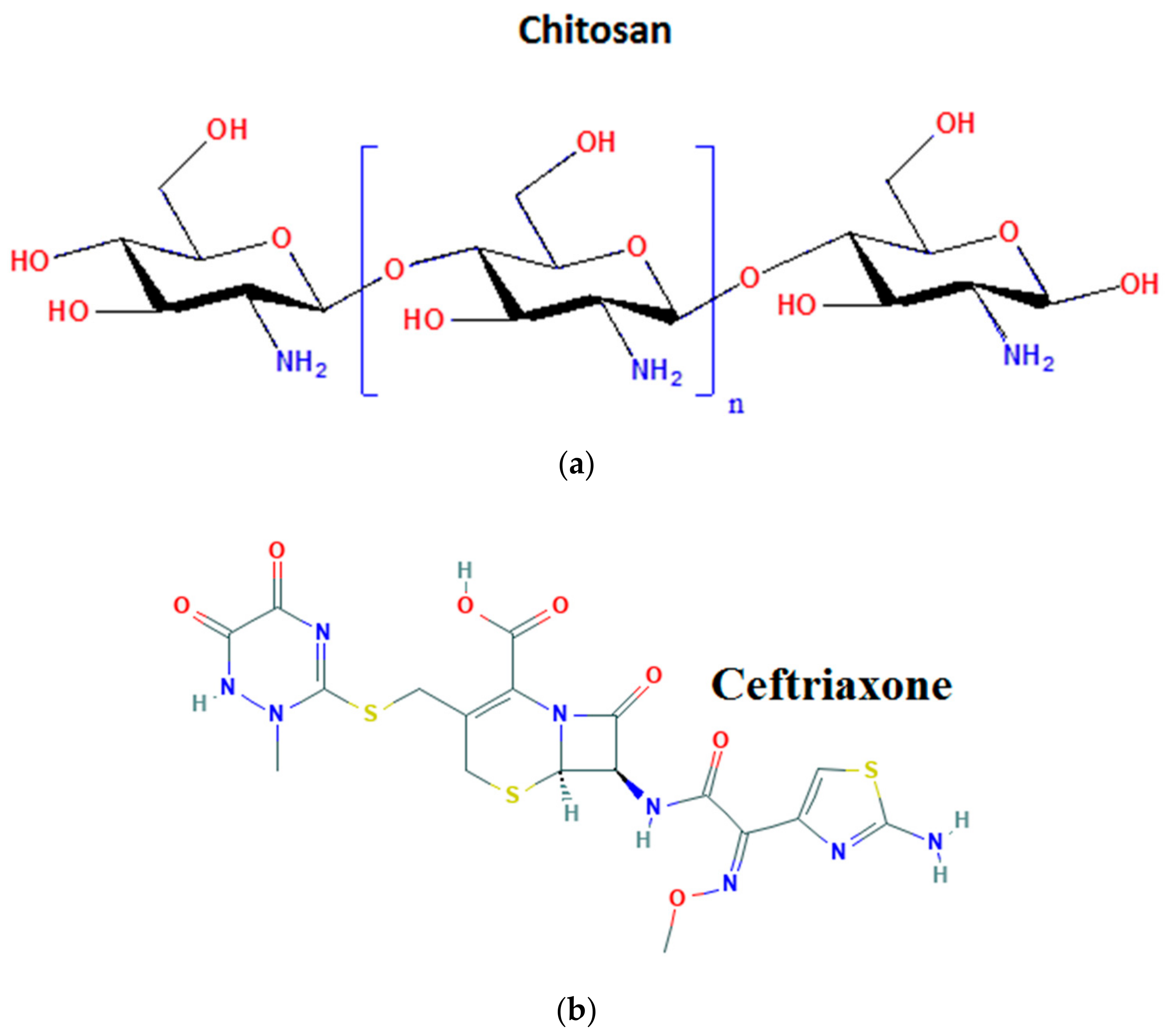
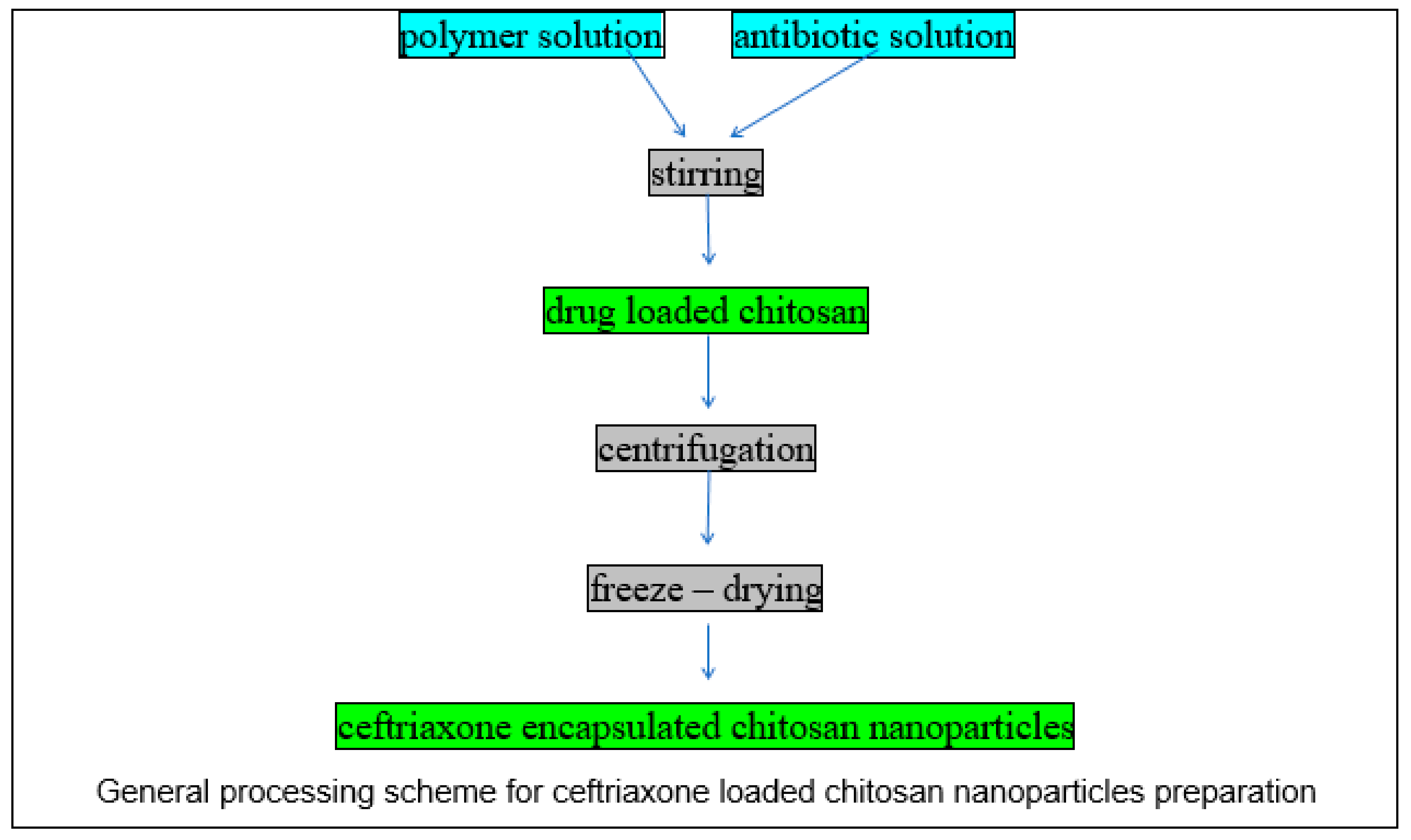
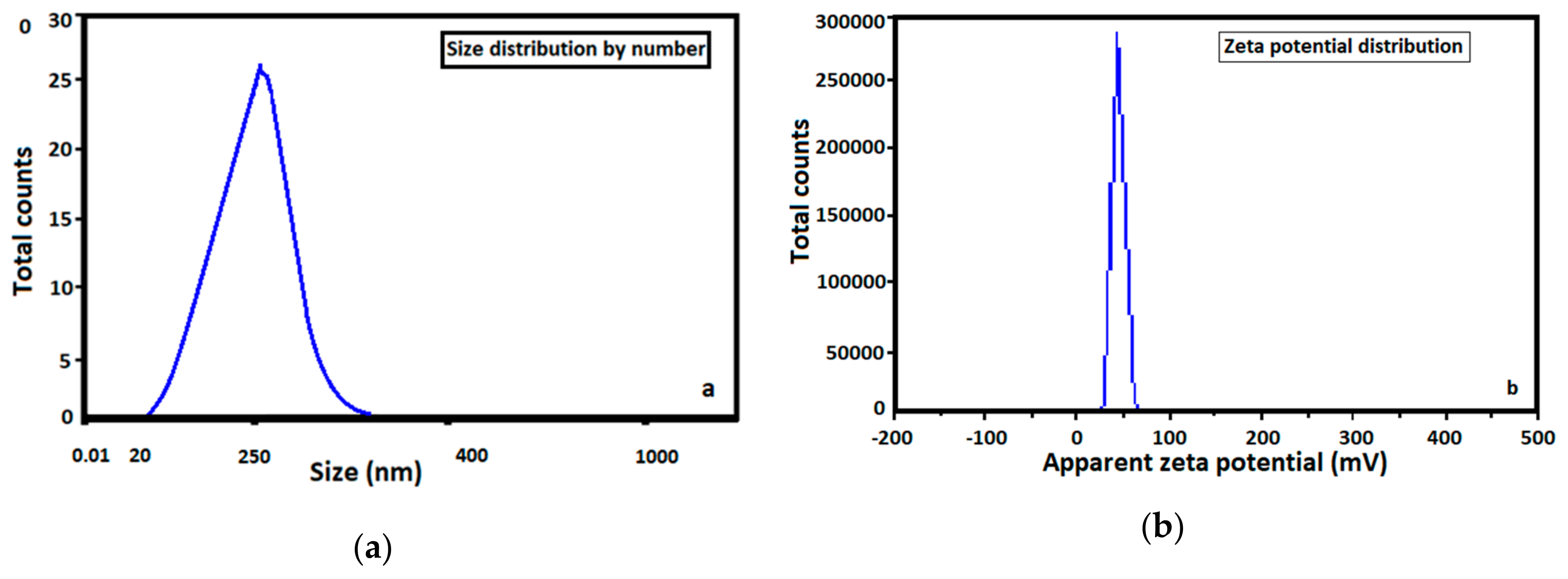
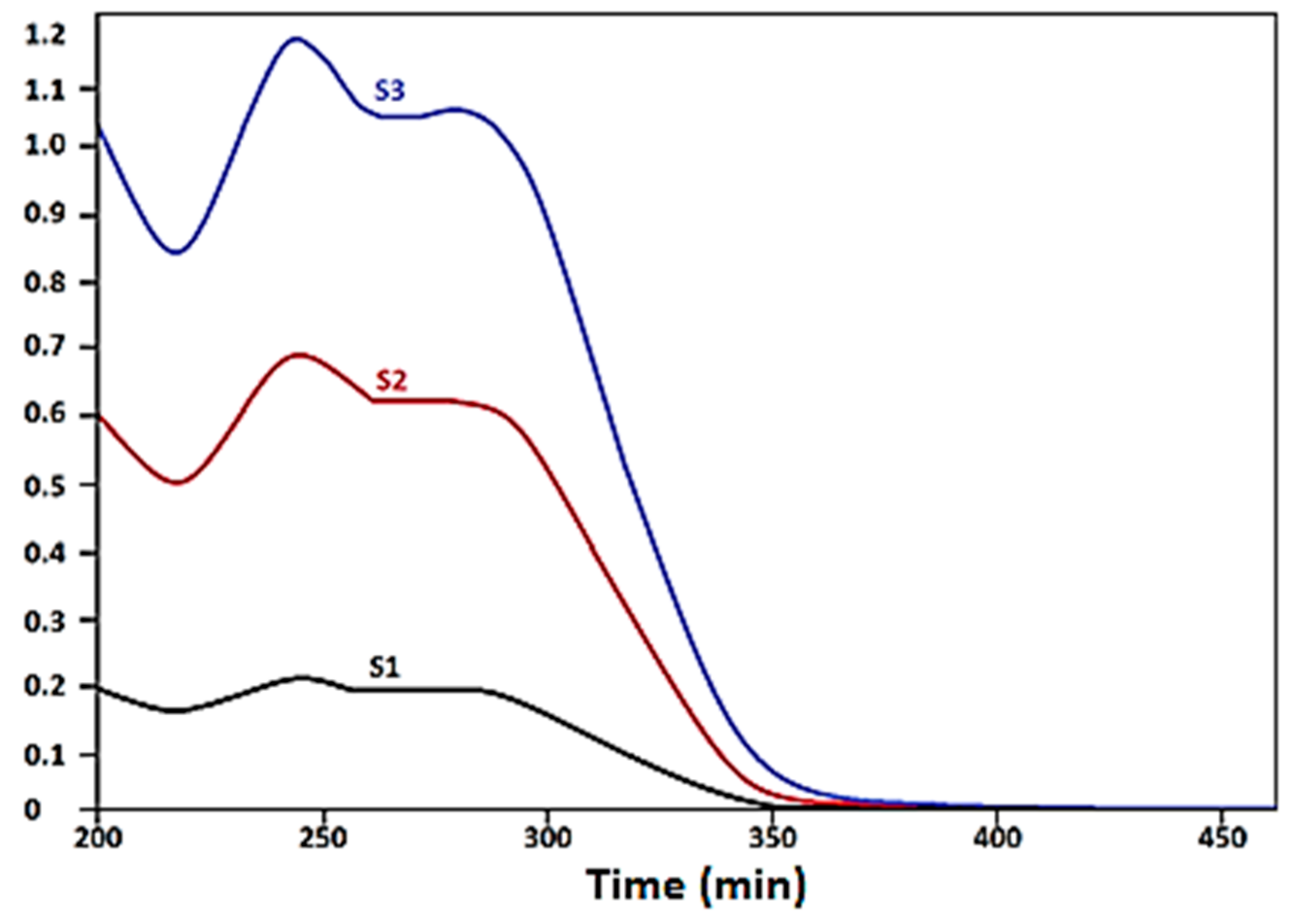
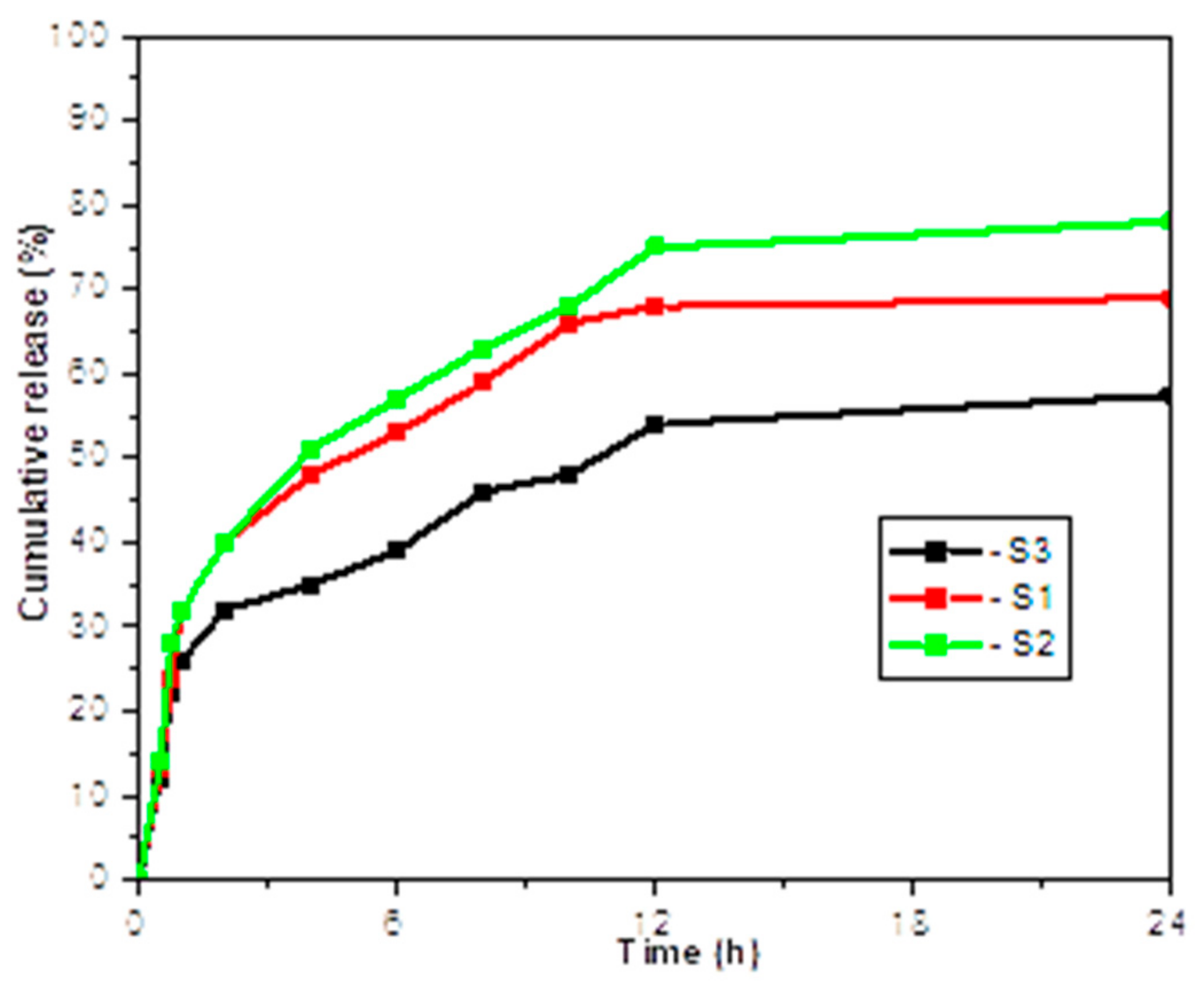
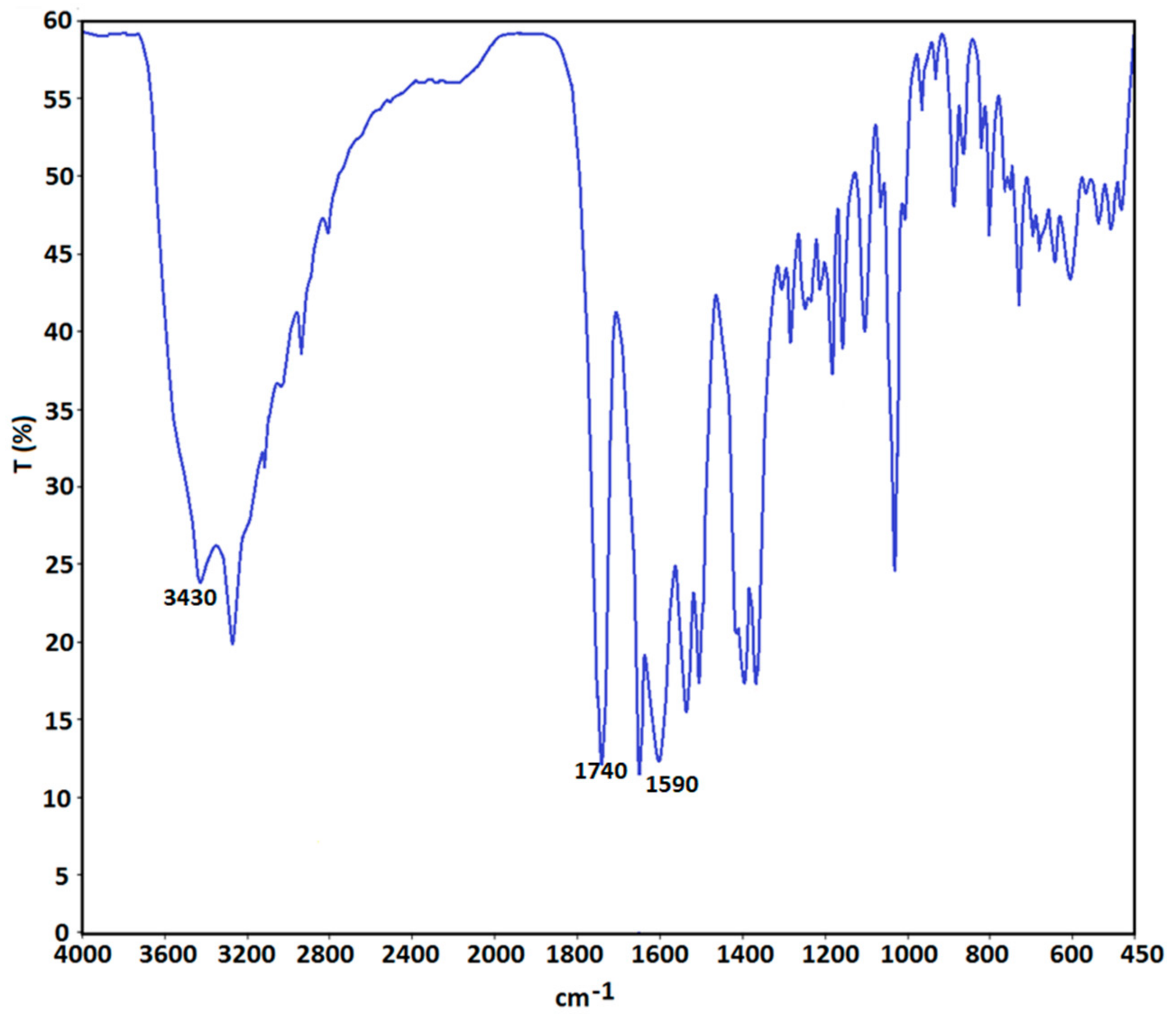
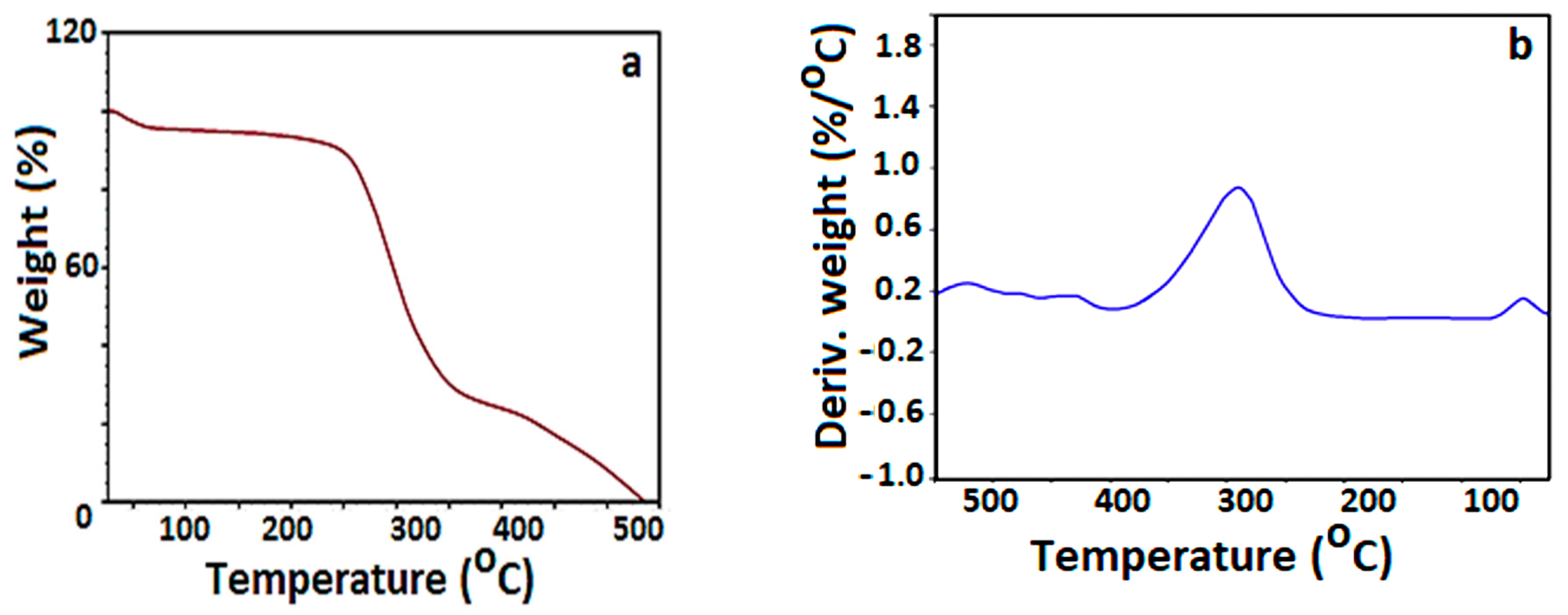
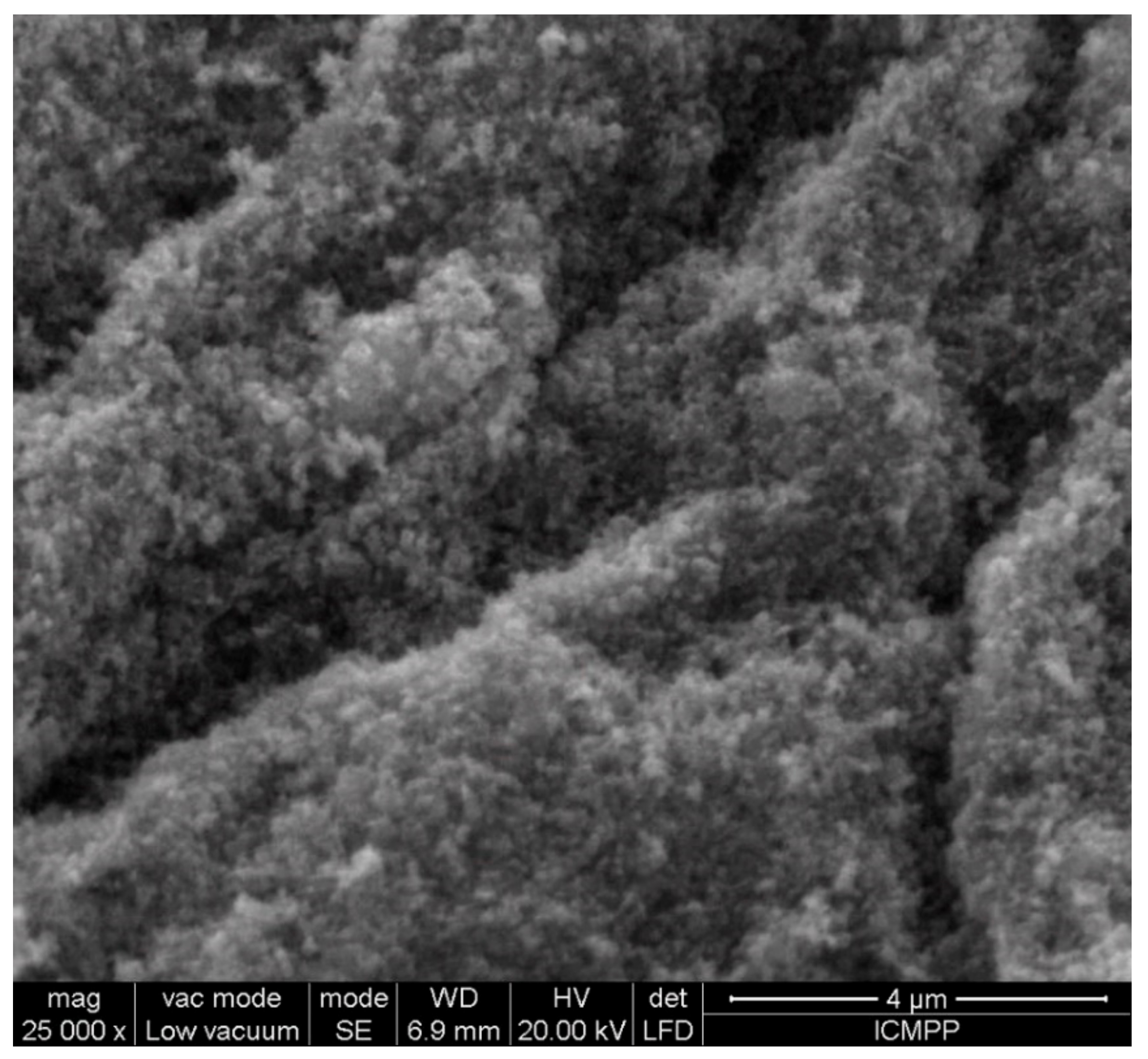
| Formulation Code | Amount of Antibiotic (mg/mL) | Amount of Chitosan (mg) | Amount of TPP (mg/mL) | Drug–Polymer Ratio |
|---|---|---|---|---|
| S1 | 10 | 10 | 0.25 | 1:1 |
| S2 | 10 | 30 | 0.25 | 1:3 |
| S3 | 10 | 50 | 0.25 | 1:5 |
Publisher’s Note: MDPI stays neutral with regard to jurisdictional claims in published maps and institutional affiliations. |
© 2020 by the authors. Licensee MDPI, Basel, Switzerland. This article is an open access article distributed under the terms and conditions of the Creative Commons Attribution (CC BY) license (http://creativecommons.org/licenses/by/4.0/).
Share and Cite
Duceac, L.D.; Calin, G.; Eva, L.; Marcu, C.; Bogdan Goroftei, E.R.; Dabija, M.G.; Mitrea, G.; Luca, A.C.; Hanganu, E.; Gutu, C.; et al. Third-Generation Cephalosporin-Loaded Chitosan Used to Limit Microorganisms Resistance. Materials 2020, 13, 4792. https://doi.org/10.3390/ma13214792
Duceac LD, Calin G, Eva L, Marcu C, Bogdan Goroftei ER, Dabija MG, Mitrea G, Luca AC, Hanganu E, Gutu C, et al. Third-Generation Cephalosporin-Loaded Chitosan Used to Limit Microorganisms Resistance. Materials. 2020; 13(21):4792. https://doi.org/10.3390/ma13214792
Chicago/Turabian StyleDuceac, Letiția Doina, Gabriela Calin, Lucian Eva, Constantin Marcu, Elena Roxana Bogdan Goroftei, Marius Gabriel Dabija, Geta Mitrea, Alina Costina Luca, Elena Hanganu, Cristian Gutu, and et al. 2020. "Third-Generation Cephalosporin-Loaded Chitosan Used to Limit Microorganisms Resistance" Materials 13, no. 21: 4792. https://doi.org/10.3390/ma13214792
APA StyleDuceac, L. D., Calin, G., Eva, L., Marcu, C., Bogdan Goroftei, E. R., Dabija, M. G., Mitrea, G., Luca, A. C., Hanganu, E., Gutu, C., Stafie, L., Banu, E. A., Grierosu, C., & Iordache, A. C. (2020). Third-Generation Cephalosporin-Loaded Chitosan Used to Limit Microorganisms Resistance. Materials, 13(21), 4792. https://doi.org/10.3390/ma13214792




.jpg)

